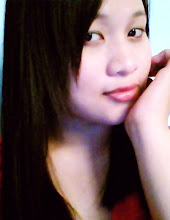1. Career placement services. Almost every school or training facility offers some form of job placement assistance. Visiting this office can yield job leads you would most likely never discover on your own. Once local employers realize the quality of workers coming out of the training center or school, they will target their job openings accordingly. Instead of placing expensive ads in newspapers or sorting through thousands of applications, companies often reach out directly to schools or training centers.
In addition, career placement offices often act as a clearinghouse for part-time jobs or unpaid internships. It may pay to apply for an entry-level job while in training in order to gain valuable real world experience in that field.
2. Public bulletin boards. Instead of placing ads in local newspapers, some small businesses or services will put up flyers on public bulletin boards. Look in student centers, grocery stores, laundromats, coffee houses and similar public gathering places for these job openings. This is especially useful for musicians or other artists who have difficulty finding jobs through conventional methods.
3. Networking. One of the best ways to find a job is to declare your availability loudly and often. By talking to relatives or church members or instructors, you might learn of employers looking for your particular skills. If nothing else, you may find decent work to support yourself while continuing the career search. Remaining silent about your job needs will rarely lead to job offers. You need to make your skills and intentions clear to those connections who may know the right people. The customer in the next barber's chair might be the human resources director of a local company or the owner of a small business. A fellow church member may also own a business or know others who do.
4. Temporary agencies. One trend in the manufacturing sector is to hire new workers through temporary service contractors. At one point in history, temporary workers were rarely hired full-time because of stiff buy-out policies. But the current thinking is that temporary workers are more akin to interns- they can be trained for permanent assignments while saving the company money in wages and benefits. Working for a temporary agency may not pay as well as a permanent hire, but it's often the only way to get your foot in the door and prove your merit to local employers.
5. Job fairs. Every year local and national companies come together for conventions and job fairs. These job fairs can connect company representatives with potential employees without the usual logistical problems. A good job fair is like one-stop shopping for the diligent job seeker. Gather all of the information you can during the convention, and don't be afraid to ask serious questions whenever you meet a company representative. Find out the process you'll need to follow in order to line up a good interview later.
6. State employment agencies. Look in the local yellow pages for the nearest state-sponsored employment center. These may operate under the same roof as unemployment compensation offices, so make sure you're going to the right building. After filling out an extensive application containing all of your work history, skills and education, you may be interviewed by a job coordinator. Depending on your qualifications, a job may be available within a week. Even if the coordinator doesn't have an immediate job opening to share, you can often look up new jobs on a self-serve computer system.

7. Professional job placement services. This may be an expensive route to take for a new graduate, but a professional employment service may have targeted leads on jobs you'd never discover on your own. Some ask for a fee to keep your name on file, while others collect a portion of your salary until the debt has been settled. These placement services may also offer to create resumes or hold mock interviews in order to hone your skills. 8. In-store employment kiosks. Many supersized retail stores now offer electronic applications at kiosks located near the customer service area. Others may have online connections which lead directly to an application page. It may also pay to research different company websites for contact information.
